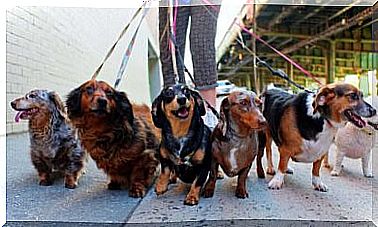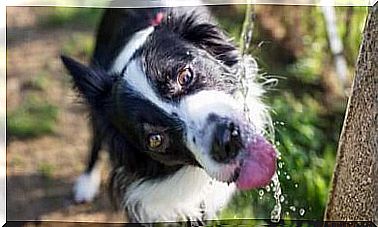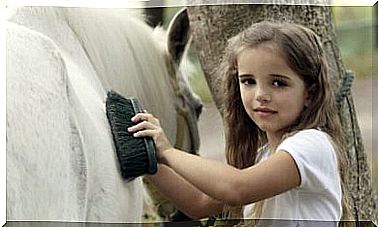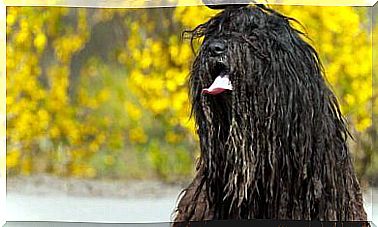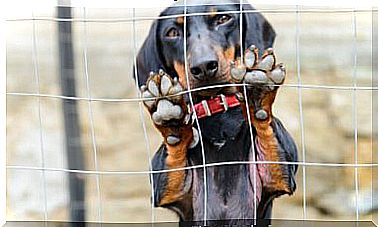9 Hard-to-train Dog Breeds
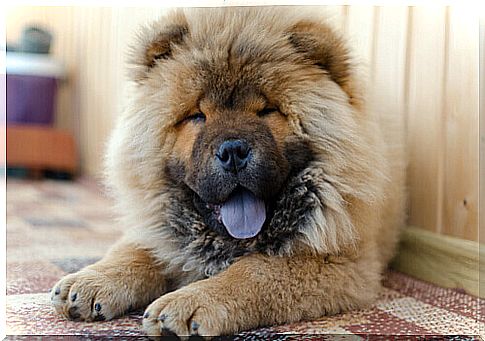
There are rumors among owners that there are breeds of dogs that are difficult to train. Many believe that huskies, Samoyeds or Japanese breeds are “difficult”, and that they cannot be trained or educated like other dogs. What’s real about it?
Primitive breeds: the hard-to-train dog breeds
Not all dog breeds emerged at the same time. Some appeared shortly after the Middle Ages, others appeared in the 19th century, but there are some species that are much older.
It is believed that dogs began to differentiate themselves from wolves and evolve on their own in the year 4,000 BC. C. Humans have become sedentary. This led to the creation of garbage dumps on the outskirts of the settlements. Thus, several groups of wolves began to feed on the remains of food instead of hunting. They were considered the first dogs.
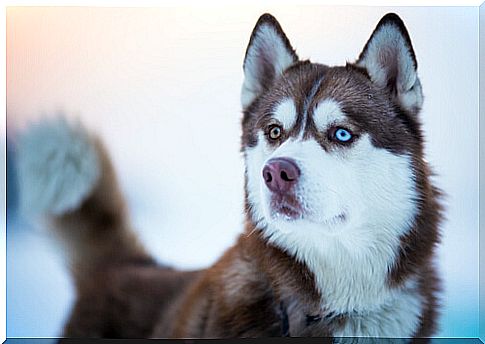
There are some primitive breeds, that is, dogs that have evolved little since then. Its characteristics are similar to those of its ancestors. Therefore, they still have many traits of their “parents”.
These are the Nordic or Asian breeds:
- Siberian Husky
- Alaskan Malamute
- Samoyed
- spitz type dogs
- Finnish or Nordic shepherds in general
- Chow chow
- Akita inu
- Shiba Inu
- korean jindo
Japanese races, yes, bark. However, those who know a Japanese dog may notice that they have a temperament and character very different from other dogs.
Difficult races to train and punish
It is not true that these races cannot be trained. Proof of this is that Nordic dogs are often trained to pull sleds, tend livestock or hunt. What makes these races special is that they cannot be trained with punishment.
Usually, when we want to educate or train a dog, we make the mistake of punishing them when they are wrong. Instead of allowing them to try until they get what we want and then reward them. We usually interrupt your learning processes with negative experiences.
This technique definitely doesn’t work with these breeds. Other breeds were molded and mixed with other dogs that reacted in the way that interests humans in relation to punishment. However, primitive dogs did not develop this ability.
That is, if you are trying to teach a husky something (it may be to sit or not ask for food at the table), you will not get anything punishing or scolding the dog. He cannot relate the behavior to his punishment. That way you’ll only get him scared. Also, this way, he does not receive any information, nor does he even know that he is doing something wrong.
Positive reinforcement: certainty of success
Nordic, Japanese or primitive races cannot learn by punishment. However, they react very well to positive reinforcement and rewards.
Any dog’s learning process is accelerated if we eliminate punishments and educate him only with positive reinforcement. Positive reinforcement is a gratification. That is, giving something that a dog likes as a result of a behavior that we want him to repeat.
Something very simple to do is reward the animal when they do what we want. This is essential with these difficult-to-train dog breeds. Because, despite being unable to relate something negative to their behavior, they relate a desirable consequence to their behavior very easily and quickly.
That is, if you want a husky to stop begging for food at the table, he will learn much better if you reward him when he isn’t asking. This will be much better than punishing him for being by your side making a face at the dog. Positive reinforcement is necessary for any dog’s learning and, in the case of difficult-to-train dog breeds, it is the only option available.
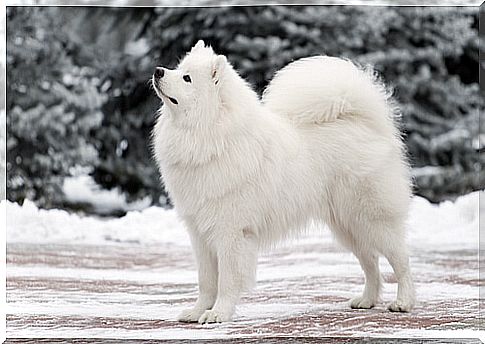
Positive reinforcement in cats
Those who often refer to these breeds as “cats” have some reason. After all, these dogs learn the same way their feline companions do . Cats don’t relate a punishment to their behavior. Instead, they learn very quickly by applying methods based solely on positive reinforcement.
If your cat scratches the sofa and you scold or punish the animal every time it does, it will continue to scratch the sofa . The cat does not understand that your reaction and his negative behavior are related. However, if instead of using the sofa to scratch, he uses the scratcher and wins a prize, he will understand very quickly what you want.
Like Nordic, Asian or primitive breeds, cats cannot learn from punishment. However, that doesn’t mean they can’t learn: they can be trained, but using positive reinforcement.
With prizes and just a little patience, any dog, even one of those hard-to-train dog breeds, can learn.

